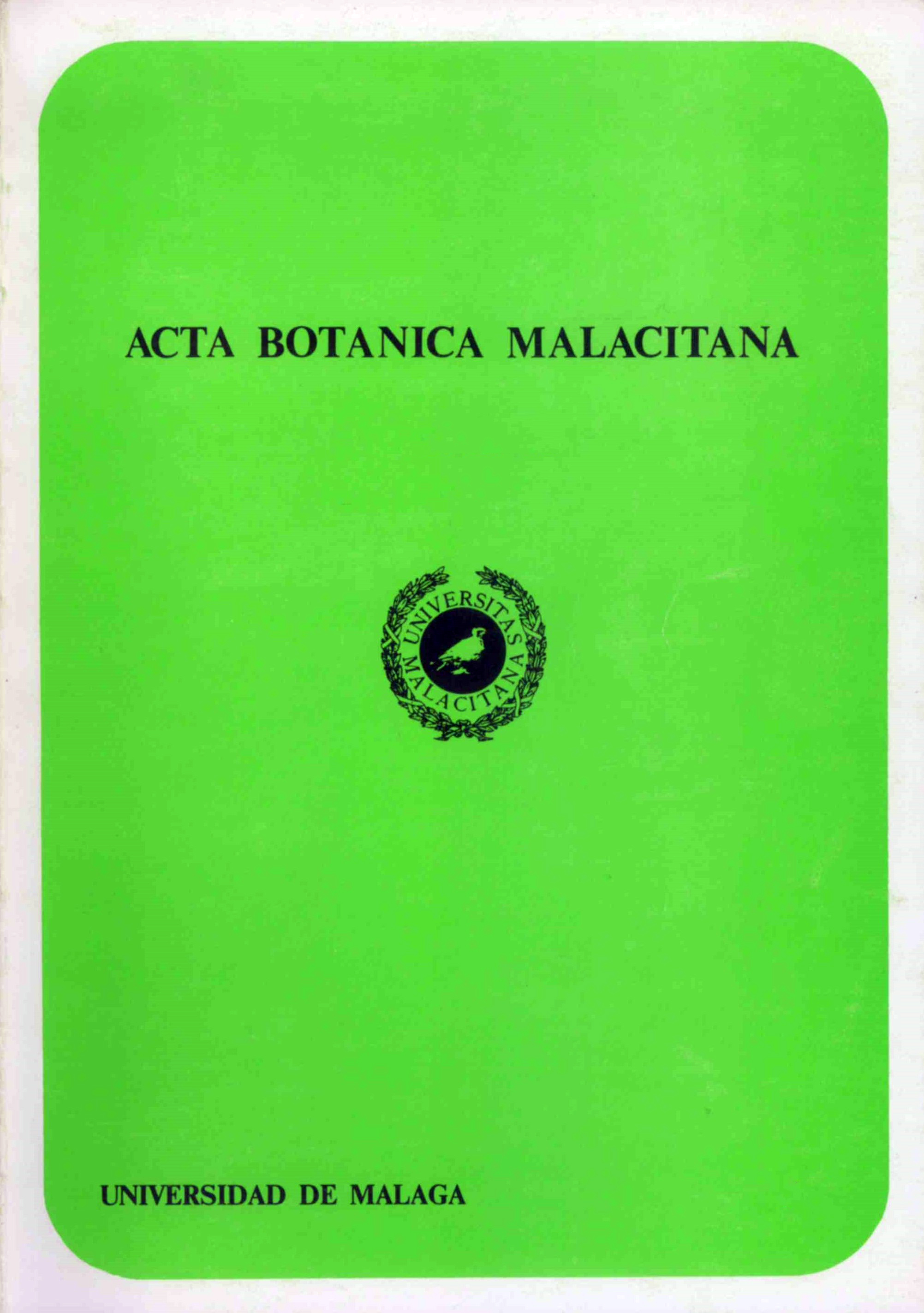Contribution to the knowledge of the genus Ephemerum hampena in the Iberian Peninsula
DOI:
https://doi.org/10.24310/Actabotanicaabmabm.v7i.9726Keywords:
.Abstract
In the Iberian Peninsula the genus Ephemerumis represented by four species. It should be considered a rather more common genus than is usually admitted, when all the references which exist up to the present are taken into account. Casares Gil (1915) makes no reference to it for Spanish flora and, up to the present time, only one gathering was known, carried out in Portugal in the 19th century (Welwitsch 1842).
Presented in this work are descriptions, some morphological, ecological and phytogeo- graphical information, as well as the distribution of each species throughout the Peninsula.
Downloads
Metrics
References
ACUN?A, C. CASAS DE PUIG & al. —1974— Aportaciones al conocimiento de la Flora Briolo?gica espan?ola. Notula I: el Cabo de Gata (Almeria). Anal. Inst. Boj. Cavandles 31(2): 59-95.
AUGIER, J. —1966— Flore des Bryophytes. Paris.
BILEWSKY, F. —1974— Some notes on the distribution of mosses in Israel and Palestine. Rev. Bryol. Lichenol. 40 (3): 245-261.
BRUCH, PH, W. PH. SCHIMPER & T.H. GUMBEL —1836— Bryologia Europaeal. Stuttgartiae.
BRYAN, V.S. & L.E. ANDERSON —1957— The Epbcmeractue in North America. The Biyologist, 60, 2: 67: 102.
BRYAN, V.S. —1957— Cytotaxonomic s tudies in the Ephemeraceae and Funariaceae. iden, 60, 2: 103.126.
CASARES-GIL, A. —1915— Muscineas de la Peninsule Ibe?rica. Madrid.
CASAS DE PUIG. —1957— La Flora Briolo?gica del Cap de Creus. Pharmacia mediterranea, 2: 454.
CASAS DE PUIG. —1974— Quelques Muscine?es de la Sierra del Cabo de Gata et leur relation avec le flore bryologique a fricaine. Soc. bol. Fr., Coll Bryologie, 121: 313-318.
DE SLOOVER, J.L.: & F. DEMARET. —1968— Flore ge?ne?rale de Belgique. Bruxelles.
DIXON, H.N. —1924— The Student's handbook of British Mosses. London.
DOUIN, CH. —1907— Etude sur l'Ephemerum stellatum Phil. et remarques sur les Ephemerum europe?ens. Soc. hot. Fr. 54: 242-249 e 306-326.
GROUT, A.J. —1937— Moss Flora of North America and North Mexico. Vermont.
LUISIER, A. —1924— Musci Salmati censes. Madrid.
MACHADO, A. —1928-1932— Sinopse das Briofitas de Portugal. 2.' Parte. Coimbra.
NYHOLM, E. —1956— Moss Flora Fennoscandia II. 2. Lund.
PODPERA, J. —1954— Conspectus Muscorum Europeorum. Praha.
POSPISIL, V. —1960— Beitrag zur Verbreitung und Oekologie Ephemerum serratum in der Tschechoslovakei. Acta Musei Moraviae, 45: 165.
REJMENT-GROCHWSKA, I. —1958— Localite?s nouvelles des Bryophytes au environs de Varsovie. Fragm. Fl. et Geob. 5: 281.
ROGEON, M. —1975— Ephemerum cohaerens var. flotowianum muscine?e nouvelle pour le Centre-Ouest de la France. Bull. Soc. Bol. Centre-Ouest 6: 105-108.
SIPMAN, H. —1973— Ephemerum in Nederland, in het bijzonder E. minutissimum Lindbeigia 2, 1: 122-123.
TAKAKI, N. —1976— Effects of fertilizers on water quality and indicator macrohjrdrophyts. in Yatazawa, M. Magoya. Japan.
VAN DER WIJK & al. —1959-1969— Index Muscorum. Utrecht.
Downloads
Published
How to Cite
Issue
Section
License
All information related to the licensing of published works in Acta Botanica Malacitana and copyright can be found in our Editorial Policy.







1.png)
